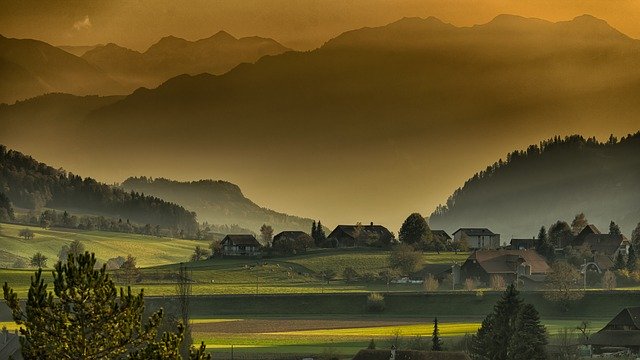Upgrading your outdoor spaces with landscaping services is a great way to add value to your home as well as enhance your overall living experience. The next logical step, once you have a landscape you can be proud of, is to accentuate it with landscape lighting.
With lighting you can create an ambiance around your property that takes a great design and makes it magnificent. Lighting is extremely versatile and its powers of enhancing the aesthetics of a space are limitless. Landscape lighting also offers the ancillary benefit of security by providing illumination that can deter would-be criminals.
Landscape lighting sounds great, but you may be wondering where do you start? Here are five tips for how to get the most out of your future landscape lighting project:

Gather Ideas.
This is one of the most fun stages in the process; getting inspiration. There are many places you can get great ideas for your future landscape lighting. Home and garden magazines are a great resource, so is the internet or television. Home improvement is a hot topic and there are plenty of outlets that like to cover subjects like landscape lighting regularly. Take a look at these resources and get some ideas of the styles and types of lighting techniques you would like to use. These ideas form the foundation for the eventual landscape lighting design you will use. At very least, knowing what you like will help move the process along.
Create A Lighting Layout.
This step is crucial because it is where you will determine WHERE you want your lighting to go. The best way to do this is to take a rough sketch of your property (nothing elaborate, hand drawn with crayons is fine) and mark the areas you’d like illuminated. Consider what landscape features you want to accentuate. Also consider what areas you’d like illuminated for security purposes. Look at exterior design elements of your home as well and see if any of those should stand out more than they do. Landscape lighting is very versatile and a fixture can be installed virtually anywhere on your property.
Decide What Styles & Techniques To Use.
There are many different styles and techniques you can incorporate, each offering a unique look using varying positioning, shadow-play and brightness. Identifying the overall style may be a good first step in this process. For example, perhaps you would like a minimalist look, which offers just enough light to see the property but is quite understated and isn’t flashy. Or you may wish to take the statement approach and really draw attention to select areas of your yard and home. The symmetrical style offers very even, clear lighting that looks crisp and precise. The high contrast style allows you to emphasize with strong lighting specific areas while having them surrounded by darker areas. There is the also the full natural style, which accentuates only the natural elements of your landscape and ignores your home altogether. These looks are each achieved using a combination of lighting techniques. They are:
- Highlighting – A simple spotlight at the base of a feature achieves this.
- Silhouetting – The light placed behind a feature allows for only the backdrop to be illuminated, creating a stark silhouette.
- Shadowing – Again the light is placed at the base of a feature, but at an angle that purposefully casts shadows on an adjacent wall.
- Wall Washing – Lighting pointed at a slight angle directly at the exterior of your home creates an even glow that seems to come off your walls.
- Up-Lighting – Simple, upward facing spotlights.
- Down-Lighting – Casting the light downward for a different effect.
- Moonlighting – Similar to down-lighting, instead of a straight beam, your light should have a glare guard so it creates a softer light from above, simulating moonlight.
Find The Right Lighting Fixtures.
The next challenge to tackle is finding the right kind of lighting fixtures for your desired plan. First, there are the types of lights to consider. Line voltage lights (also called house current) give you the ability to use high wattage bulbs. These will be your bright spotlights, but these lights can also be incandescent, fluorescent, or a colored sodium or mercury vapor bulb. Solar lights don’t give you a lot of output, but for a minimalist look this may be ideal as they also don’t use energy. LED’s are extremely energy efficient and because they don’t use a filament, they can be pretty much any color you want. They also last a much longer time than any other bulb. The only real disadvantage is that LED’s have a narrow illumination field, much like a flashlight. This could be perfect for colored up-lighting or down-lighting effects. Low voltage lighting uses very low power and are extremely energy efficient. These lights use low wattage bulbs which provides the advantage of being able to use more fixtures to light a broader area using the same wattage. These are great for path lights, string lights and other lighting designs calling for many fixtures. After you have identified the types of lighting you wish to use, you’ll want to pick out fixtures. The fixtures themselves can also play a part in the overall design and aesthetics. These can be unassuming canister lights or decorative lamplights. The shape of the fixture also often determines the way the light sprays, allowing for a focused beam or a bright field.
Hire A Professional Landscape Lighting Specialist.
Once you have done your due diligence, you’ll have a great idea of what you want and what it should cost. While this is great preparation, landscape lighting installation is best performed by a trained professional that can ensure the job gets done properly. A qualified lighting professional will be able to take your notes and transform them into a workable and affordable design. Then, before your eyes they will make it a reality.
While there may seem to be a lot involved with a landscape lighting project, it is a lot of fun. Landscape lighting allows you to put the finishing touches on your outdoor living areas, as if molding and sculpting it into the perfect space. When you are ready to enjoy the enhancement to your property landscape lighting offers, follow these simple steps to get the most out of your lighting experience.

